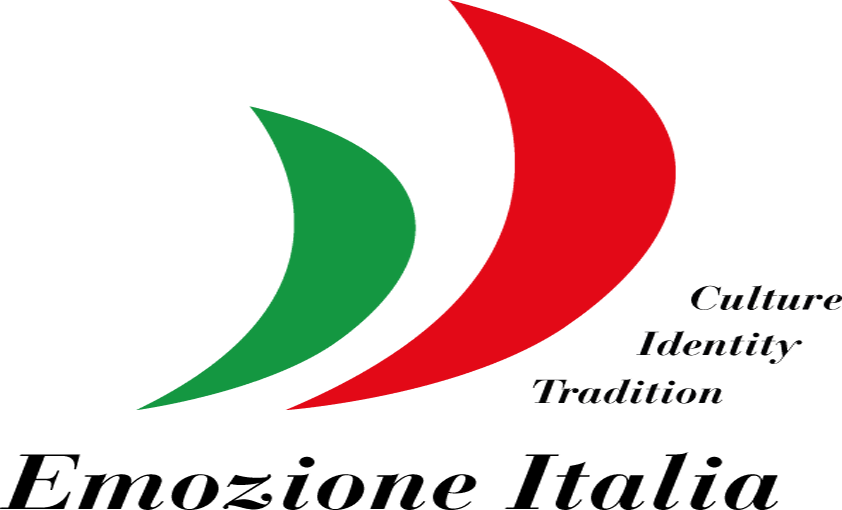Visit Genova
Places and monuments of great interest
Rolli Palaces
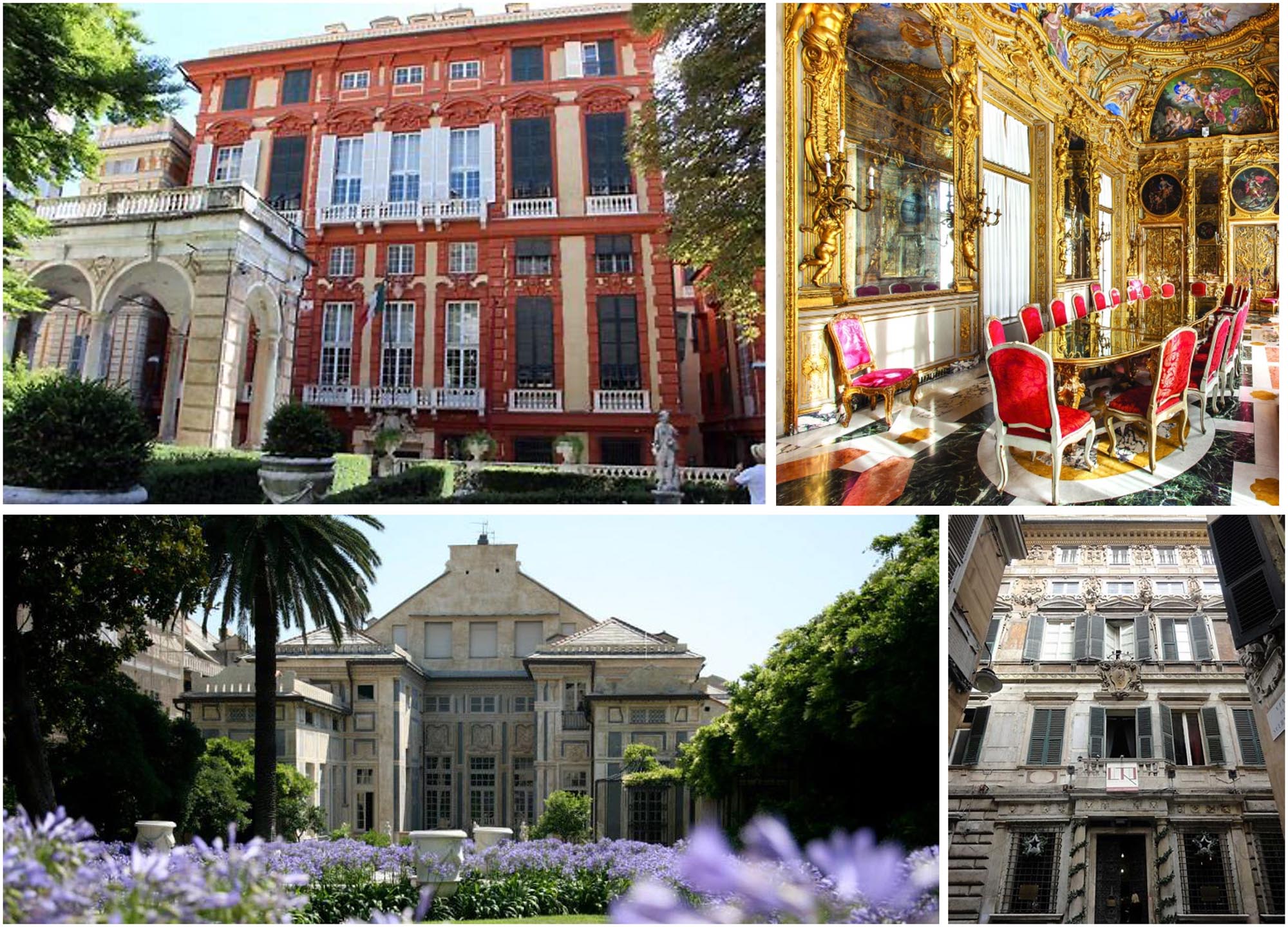
The Strade Nuove (via Giuseppe Garibaldi, formerly Strada Nuova or Via Aurea, via Cairoli, formerly Strada Nuovissima, via Bensa and via Balbi) are a group of roads built by the Genoese aristocracy between the second half of the sixteenth century and the first half of the seventeenth century , when the Republic of Genoa was at the apex of its maritime and financial power.
The Rolli Palaces are a group of noble palaces which, at the time of the ancient Republic, were obliged, on the basis of a public draw from the lists (rolli) of public housing, to host the high personalities who were visiting the Genoa State. They include a series of late Renaissance and Baroque buildings which typically have three or four floors “with spectacular open stairways, courtyards and arcades overlooking gardens”..
There are a total of 34 palaces built by the Genoese aristocracy at the turn of the 16th century and the beginning of the 17th century. The most significant (about ten) are located in via Garibaldi, via Cairoli or in neighboring areas. Among them, Palazzo Tursi, seat of the Municipality, the museum of Palazzo Rosso, the museum of Palazzo Fieschi di Pellicceria, the seat of the Chamber of Commerce, etc. should be noted.
Many of the interiors, despite the passing of the centuries and the heavy damage due to the bombing of the Second World War, have the original decorations of the greatest authors of
Genoese mannerism and baroque. In later times, the same houses have hosted famous travelers who included the Ligurian capital in their cultural or tourist-economic Grand Tours.
Aquarium
It is the most important aquarium in Europe where countless quantities of fish are represented, including sharks, dolphins, turtles, as well as exotic specimens of insects, etc.

Galata Sea Museum (Mu Ma)
Located in via Gramsci it presents an enormous amount of documentation, equipment, tools, paintings, etc. that make the history of navigation over the centuries up to the present day. In the adjacent dock there is the submarine Nazario Sauro that can be visited.
Ducal Palace
Ancient Doge’s Palace with medieval origins and subsequent evolutions in the following centuries. Often home to important themed exhibitions.
Prince’s Palace
It is the ancient home of Andrea Doria. Giuseppe Verdi stayed in the attic of the palace and composed some of his works here.
Great prestige Churches
Genoa has a large number of prestigious churches with important historical implications. The most important are:
- The Cathedral of San Lorenzo
- Santa Maria delle Vigne
- Basilica of San Siro
- San Donato
- San Matthew
- Santa Maria di Castello
- San Giovanni di Pré and adjoining Palazzo della Commenda
- San Luca
- Church of Jesus and Saints John and Ambrose
- Santa Maria Assunta
- Santa Maria della Maddalena
Di seguito una breve descrizione delle chiese storiche che suggeriamo di visitare.
S. Lorenzo Cathedral

The most important church in Genoa is the Cathedral of San Lorenzo. Curious stories and fascinating legends circulate around the Genoese Cathedral and the representations on the façade.
Built around the year 1098 on a previous basilica of the V – VI century and expanded over the centuries in solemn and precious forms, the cathedral dedicated to San Lorenzo Martire houses the ashes of the city patron San Giovanni Battista, which arrived in Genoa at the end of the First Crusade.
The basilica of San Lorenzo became a cathedral from the ninth century, replacing the basilica of the twelve Apostles, dedicated in the sixth century to San Siro, bishop of Genoa, which at that time was located outside the ancient core of the city. Thanks to the transfer of the cathedral and the construction of the walls, the area of San Lorenzo becomes the heart of the city that grows and changes: in a city without squares, the churchyard of San Lorenzo offered a fundamental stage for political and civil life throughout the Middle Ages.
Pope Gelasius I consecrated it as a Cathedral in 1118, and began its reconstruction in the form of a Romanesque church, with funds from municipal taxes and military enterprises such as the Crusades. From 1133 the church obtained the rank of archiepiscopal. After the fire of 1296, the building was partly restored and partly rebuilt in the forms of Gothic architecture: between 1307 and 1312 the majestic black and white banded facade was completed, the counter-façade was frescoed and the internal colonnades, with new capitals and the addition of false galleries, were rebuilt; as often happens in Genoa, the Romanesque structures still in good condition are preserved.
Between the fourteenth and fifteenth centuries the cathedral was enriched with new altars and chapels, including in the left aisle the splendid chapel that preserves the ashes of St. John the Baptist, a true masterpiece of art of the fifteenth century. In the year 1455 the small loggia was built on the north-east tower, on the façade, to which the opposite one was added in 1522, in the typical forms of Mannerist architecture.
In the mid-sixteenth century, on the orders of the city magistrates, the Perugian architect Galeazzo Alessi redesigned the entire building, but only managed to have the cover of the naves, floor, dome and apsidal area rebuilt. But to finally see the work of the cathedral completed it will be necessary to wait until the seventeenth century, with the riot of golden stuccoes in the apse and the late Mannerist frescoes of the “Stories of San Lorenzo” by Lazzaro Tavarone. A late nineteenth-century restoration enhanced the medieval parts that characterize the current appearance of the cathedral.
A curiosity worth noting: in an everlasting memory against the horrors of war, inside the cathedral, in the right aisle, there is an exact copy of an unexploded device. The grenade was fired in 1941 by the British fleet during one of the worst attacks launched against Genoa during the second war and “a miracle” saved the Cathedral.
Santa Maria delle Vigne
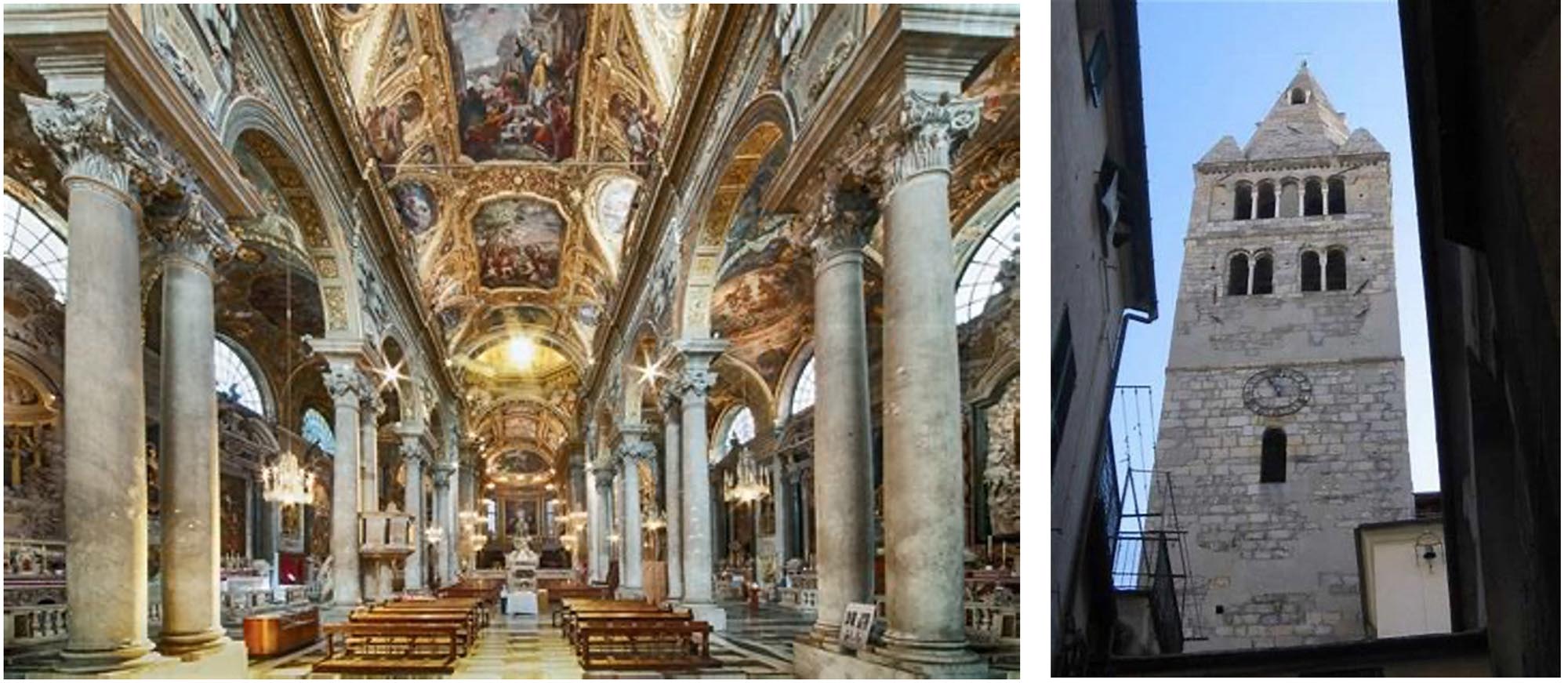
Santa Maria delle Vigne is the first Marian Sanctuary in Genoa. The Doge and the high offices of the Republic, starting from the 17th century, used to make a pilgrimage to this Sanctuary on the main Day of the city.
A strong devotion to Mary brought here several chosen souls: S. Caterina Fieschi Adorno, Ettore Vernazza, Maria Vittoria De Fornari Strata, S. Virginia Centurione Bracelli, S. Francesco Maria da Camporosso, S. Luigi Orione. In the shadow of the vineyards, the vocation to the priesthood of Giacomo Della Chiesa, the future Pope Benedict XV, developed.
The church is mentioned for the first time in a document dated 1083. The bell tower remains of the primitive church, datable to the 12th century and the cloister, of an archaic structure still earlier. The adaptation to the current forms dates back to the seventeenth century.
Basilica of S. Siro
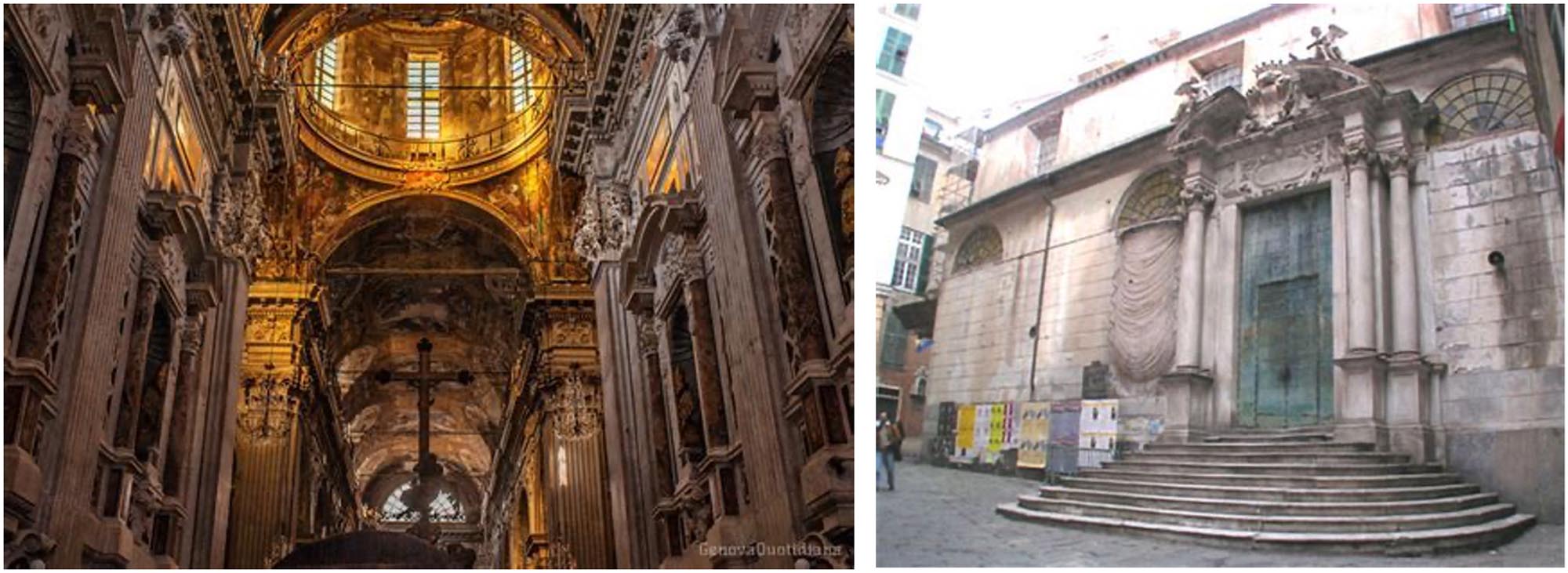
The ancient church of San Siro was built in the 4th century. Originally dedicated to the Twelve Apostles, in the 6th century it changed its name in favor of the bishop Siro. It was the first cathedral of Genoa, a title that in the ninth century passed to San Lorenzo; in February 1007 it was assigned to the Benedictines by Bishop Giovanni II and erected in the Abbey.
The monks (who kept it until 1398) rebuilt the ancient temple in Romanesque style; but the southern wing of the building was destroyed by a fire in 1580, so that the Theatines – to whom Gregory XIII had entrusted it in 1575 – completely rebuilt it between the end of the 16th and the beginning of the 17th century. The Fathers also built a convent and cloister, mutilated two centuries later by the tracing of via Cairoli; the high Romanesque bell tower (about 50 meters), already struck by lightning in 1632, was demolished at the end of 1904 for fear of a collapse.
The interior, with three naves on coupled columns, is a treasure chest. The decoration was carried out almost entirely by the Carlone family: Tommaso worked as a plasterer, while Giovanni Battista painted the frescoes of the central nave, the dome (“Gloria di San Siro”) and the choir (“Miracle of the basilisk”), in collaboration with the quadraturist Paolo Brozzi. The other wall paintings, which adorn the chapels and vaults of the aisles, are the work of Domenico Fiasella, Domenico Piola (“Glory of San Gaetano”) and Gregorio De Ferrari (“Glory of Sant’Andrea Avellino”, 1676).
Among the paintings stand out an “Annunciation” by Orazio Gentileschi, three paintings with “Stories of San Gaetano” by Piola, the “Death of Sant’Andrea Avellino” by Fiasella (with the two pendants, “Assalto dei demoni” and “Transito”, by Orazio De Ferrari) and a “Nativity of the Virgin” by Aurelio Lomi.
The sacristy (1639) contains other paintings by Orazio De Ferrari (“Last Supper”), Gregorio De Ferrari (“Rest in Egypt” and “Ecstasy of St. Francis”), Bernardo Castello (“Christ at Calvary”) and Domenico Piola ( “Beheading of the Baptist”); next to the presbytery, a “San Nicola” by Fiasella.
Among the sculptures, in addition to various works by Taddeo Carlone and his workshop, the main altar stands out, in black marble and bronze, a very famous work by Pierre Puget (1670), also author of a Crucifix.
Finally, a curiosity from a historical point of view: in the church of San Siro on 23 June 1805 Giuseppe Mazzini was baptized.
San Donato
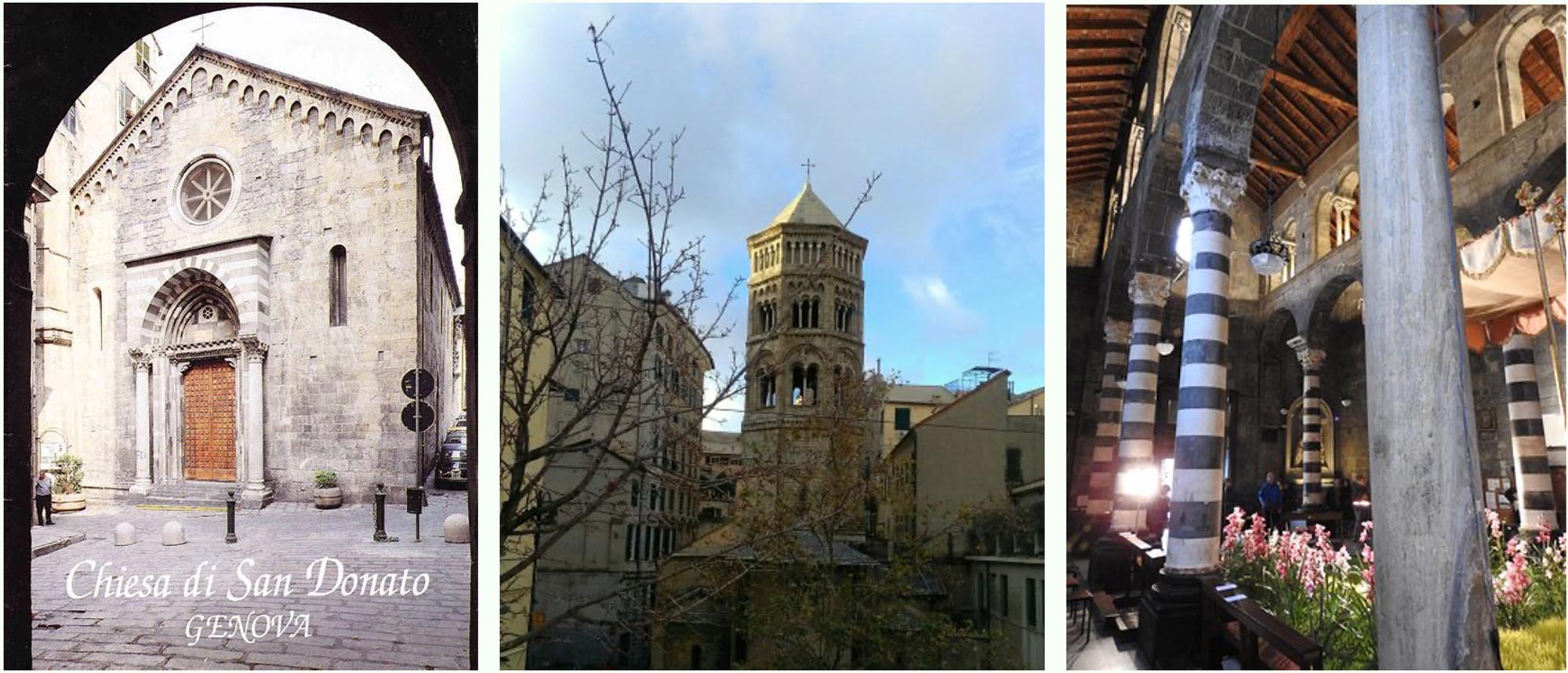
The church of S. Donato was built at the beginning of the 12th century and enlarged a century later. It represents the most important example of Genoese Romanesque: in particular for the beautiful octagonal bell tower (which it would be more appropriate to define “tower nolare”, typical of the archaic style), decorated with sawtooth friezes and a double order of mullioned windows and three-mullioned windows, of which the third order was added only during D’Andrade’s restorations at the end of the 19th century.
The façade does not reflect the original one, as it was altered by the two integrative restorations of 1888 (carried out by Alfredo D’Andrade) and of 1925, which added the rose window and the porch and eliminated the plaster after the 16th century; the splayed portal and the Roman architrave are original.
The church of San Donato, inside is divided into three naves in which the typology of the columns indicates the various construction phases: Roman re-use those of the first building; those in rocchi, surmounted by capitals, contemporary with the mullioned windows of the false matroneum, were placed during the expansion of the late 1100. The modern trussed roof of the central nave replaced the one destroyed by the bombings of the Second World War.
The works preserved inside are noteworthy, including: a 14th century “Madonna” by Nicolò da Voltri; “San Giuseppe”, altarpiece by Domenico Piola; “The baptism of Christ”, marble relief with statues, a work begun by Ignazio Peschiera and completed by his pupil Carlo Rubatto; and above all the splendid triptych by Joos van Cleve (1515) depicting “The Adoration of the Magi” (center), “The client Stefano Raggi with the patron saint” (left door), the “Magdalene” (right door) and the “Crucifix between Mary and St. John” (above). The works of Piola and van Cleve are kept in the side chapel of the left aisle.
Basilica of S. Matteo

The church of San Matteo was founded in 1125 by Martino Doria as a noble church of his family and completely modified in Gothic style in 1278. It overlooks the homonymous square, which is perhaps the best preserved corner of medieval Genoa. The building was renovated in the mid-sixteenth century at the behest of Andrea Doria by Giovanni Angelo Montorsoli (presbytery and dome); and then in 1557-59 on a project by Giovanni Battista Castello (aisles and decoration, created together with Luca Cambiaso).
The interior with three naves and, above all, the intact facade with black and white stripes, divided into three parts by pilasters framed by arches, has been preserved from the Gothic arrangement; the two-tone facing is enriched by a large central rose window and by two mullioned windows (without an internal column) on the sides. In the façade there is a Late Roman sarcophagus – according to local custom, also attested in San Lorenzo – with “Allegory of Autumn”, formerly the burial of Lamba Doria, who brought it back from Curzola.
On the left side of the church is the quadrangular cloister of San Matteo from 1308, with pointed arches on coupled columns; inside, the choir loft, the altar with trophies, the two pulpits and the urns of the presbytery are attributed to Silvio Cosini and Montorsoli (also author of the statues that adorn the niches of the apse).
In the vault of the central nave there are the “Miracle of the dragon of Ethiopia” by Luca Cambiaso and the “Vocation of San Matteo” by G. B. Castello; note a “Deposition”, a wooden sculpture by Maragliano, and the tomb of Andrea Doria, the work of Montorsoli, in the crypt.
Santa Maria di Castello, church and convent

Among the most fascinating churches in Genoa is Santa Maria di Castello, in the oldest heart of the city. The Romanesque basilica, with the adjoining convent and museum, constitutes a monumental complex of extraordinary importance. In addition to the suggestion of Romanesque architecture and priceless masterpieces of art from all eras, what makes this sacred site unique is the fact that it was built on the site of the city’s first settlement, just above the natural shelter of the coast of the ancient port.
The facade of the church and the bell tower testify to Romanesque architecture, which in Genoa takes on the language brought by the Antelamic masters, builders and stone carvers from Lombardy. One of the characteristic signs of their architecture is the reuse of materials recovered from ruins of Roman architecture. This is the case of the marble frame with leaves and griffins, masterfully recontextualized as the architrave of the entrance portal or the ten columns and fifteen capitals of the interior, which today we see brightly from the eighteenth century, but which retains the three-nave layout of the Romanesque basilica .
On the vaults and in the side chapels you can discover a precious series of paintings and frescoes by artists of the Genoese school and beyond: Bernardo Castello, Aurelio Lomi, Grechetto, Giovanni Mazone, Domenico Piola, Luciano Borzone, Giovanni and Giovan Battista Carlone, Andrea Semino , Giovan Battista Paggi; in addition of course to the sculptures and reliefs, among others the work of Leonardo Riccomanno, Filippo and Anton Domenico Parodi.
In the first frescoed cloister you can admire the Annunciation, a masterpiece of Renaissance painting painted in 1451 by Giusto da Ravensburg. Canvases by Ludovico di Brea, illuminated manuscripts, 15th century frescoes, a fine collection of Russian icons and other masterpieces are housed in the Museum of Santa Maria di Castello, which occupies the spaces of the convent, around the three cloisters.
Santa Maria di Castello is located right on the pre-Roman site where the first fortified settlement of the city developed, taken up by Roman and Byzantine fortifications and then by the construction of the bishop’s palace, between the 9th and 10th centuries, representing the seat for hundreds of years and the symbol of the military and religious power of the city. Here in 658 the Lombard king Ariperto had a first place of worship built, which the Antelami masters then rebuilt in the first quarter of the 12th century in the form of a Romanesque basilica.
In the mid-fifteenth century the church passed to the Dominicans, becoming a place of reference for humanists and writers. Meanwhile, thanks to acquisitions and demolitions, the convent had continued to grow, and in the mid-sixteenth century it already had the three cloisters still visible.
A recent restoration has wisely recovered the Romanesque decoration of the counter-façade and other elements that reinforce the medieval aspect of this truly unique sacred place.
Other places of particular interest
- Porta Soprana
- De Ferrari Square with the Region Palace
- Stock Exchange Palace
- S. Giorgio Palace, seat of the Port System Authority
- The historic alleys: via della Maddalena, via Luccoli, via San Luca, via del Campo, via Pré, vico Casana, etc.
- The Boccadasse seaside area.
